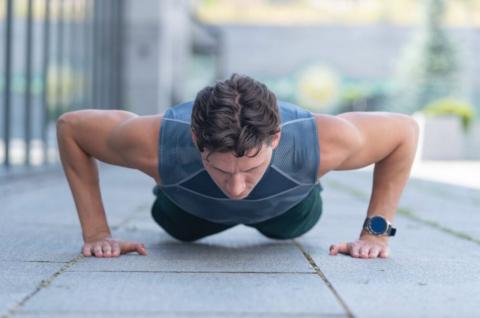
Bodyweight exercises offer a convenient and effective way to stay fit, even without access to gym equipment. However, if you’re looking to intensify your workouts and achieve greater results, there are numerous techniques to make bodyweight exercises more challenging without adding weights. Here’s how you can push your limits and get more out of every move.
Changing the speed at which you perform each movement can increase the difficulty of your workout. Slow down the eccentric (lowering) phase of exercises to increase muscle tension and time under tension. For example, lower yourself slowly during a push-up or squat, and then push up or stand up more explosively.
Adding small pulses or isometric holds to your bodyweight exercises can significantly enhance their intensity. For instance, during a squat, pulse up and down slightly before fully standing, or hold the squat position for an extra few seconds. This method increases muscle fatigue and engagement.

Maximizing the range of motion can make bodyweight exercises more effective. For example, during lunges, step out farther to increase the stretch and depth of the movement. Full push-ups, where your chest almost touches the ground, also maximize the range and effort.
Performing exercises on one leg or arm at a time increases the challenge by engaging stabilizing muscles and enhancing balance. Try single-leg squats, single-arm push-ups, or one-legged bridges. These variations demand more from your core and improve overall stability.
Adding explosive movements, or plyometrics, to your bodyweight routine can boost intensity and power. Incorporate exercises like jump squats, burpees, or plyometric push-ups to elevate your heart rate and engage fast-twitch muscle fibers.
Pairing exercises together in a superset can intensify your workout and reduce rest periods. For example, perform a set of push-ups immediately followed by a set of planks. This approach maximizes muscle engagement and keeps your heart rate up.
Changing the angle of your body during exercises can target different muscle groups and increase difficulty. For instance, elevate your feet during push-ups or place your hands on an elevated surface for decline push-ups. These modifications alter the angle of resistance and muscle activation.

Incorporate high-intensity interval training (HIIT) principles into your bodyweight workouts. Alternate between short bursts of intense effort and brief rest periods. For example, sprint in place for 30 seconds, followed by 10 seconds of rest, then switch to high knees or mountain climbers.
Train one side of your body at a time to enhance muscle balance and coordination. Perform exercises like single-leg deadlifts or single-arm planks to challenge your core and stabilizing muscles more intensely.
If available, use stability tools like a balance board or exercise ball to increase the challenge. Performing exercises like squats or push-ups on an unstable surface forces your muscles to work harder to maintain balance.
Elevating your bodyweight exercises doesn’t require additional weights or fancy equipment. By incorporating these techniques, you can intensify your workouts, enhance muscle engagement, and achieve greater fitness results. Experiment with these methods to find what works best for you and continue challenging your body to reach new heights.
For more content find us via the app store:
Discover More Content





